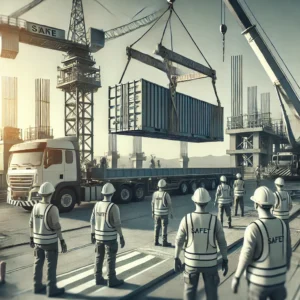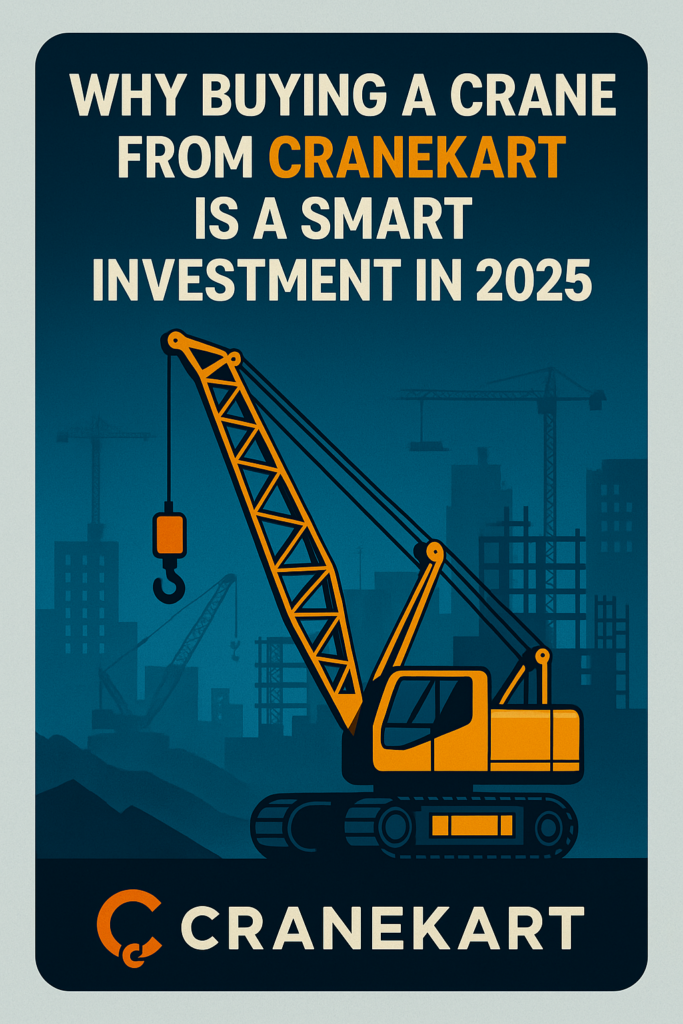Why Crane Safety Matters

Essential Crane Safety Tips for Efficient Operations
Safety is a critical aspect of crane operations, ensuring both the well-being of workers and the efficiency of projects. Whether you’re operating a mobile crane, tower crane, or crawler crane, following the right safety protocols can prevent accidents and improve productivity. In this blog, we’ll cover the most essential crane safety tips to ensure smooth and secure operations.
Why Crane Safety Matters
Crane accidents can result in severe injuries, equipment damage, and financial losses. Prioritizing safety ensures:
- Fewer Workplace Accidents – Protects operators and ground personnel from injuries.
- Regulatory Compliance – Adheres to industry standards and avoids penalties.
- Extended Equipment Lifespan – Reduces wear and tear, leading to lower maintenance costs.
- Increased Efficiency – Prevents unexpected downtimes and delays.
Key Crane Safety Tips
1. Conduct Pre-Operation Inspections
Before starting operations, a thorough crane inspection is crucial. Check for:
- Structural damage or cracks
- Proper functioning of brakes, hooks, and ropes
- Hydraulic leaks or malfunctions
- Adequate lubrication of moving parts
Pro Tip: Always maintain a checklist for pre-operation inspections to ensure nothing is overlooked.

2. Ensure Proper Load Management
Overloading a crane can lead to structural failures or tipping accidents. To avoid this:
- Always follow the crane’s load capacity limits.
- Use load charts for accurate weight calculations.
- Distribute weight evenly to prevent imbalances.
🔗 Learn More About Load Capacity Guidelines
3. Train Operators and Crew Members
Qualified and well-trained operators are key to safe crane handling. Regular training should cover:
- Emergency procedures
- Load balancing techniques
- Proper signaling and communication
- Handling unexpected weather conditions
4. Maintain Clear Communication
Crane operations involve multiple team members, making communication essential. Implement these practices:
- Use standardized hand signals.
- Equip operators with two-way radios.
- Designate a signal person for coordinated movements.
🔗 Explore Crane Safety Training Courses
5. Secure the Worksite
A cluttered or unstable worksite can lead to crane accidents. Ensure:
- Work areas are free of unnecessary personnel and obstructions.
- Weather conditions are monitored, especially for wind speed.
- Ground conditions are stable for crane positioning.
6. Follow Rigging Best Practices
Incorrect rigging can cause load shifts, leading to serious accidents. Follow these guidelines:
- Use appropriate rigging equipment, such as slings and shackles.
- Inspect rigging materials before each lift.
- Balance the load evenly and secure all connections.
🔗 Find the Best Rigging Equipment
7. Emergency Preparedness
Even with the best safety measures, emergencies can happen. Be prepared by:
- Establishing emergency stop procedures.
- Keeping first aid kits accessible.
- Training personnel on quick-response actions.
8. Regular Maintenance of Cranes
Routine maintenance is essential for crane longevity and safety. Maintenance practices should include:
- Lubricating moving parts to reduce wear and tear.
- Inspecting and replacing worn-out components.
- Checking fluid levels and hydraulic systems.
9. Understand Weather Conditions
Cranes are sensitive to weather changes, and extreme conditions can pose safety risks. Always:
- Avoid crane operations during strong winds and thunderstorms.
- Use wind speed monitoring devices.
- Secure equipment when not in use to prevent unexpected movement.
🔗 Crane Operation Safety in Extreme Weather
10. Compliance with Crane Safety Regulations
To maintain a safe work environment, follow industry standards such as:
- OSHA (Occupational Safety and Health Administration) guidelines
- IS (Indian Standards) for Crane Safety
- LOLER (Lifting Operations and Lifting Equipment Regulations) compliance
Ensure your company adheres to these standards to prevent legal issues and promote workplace safety.

Invest in Safe and Reliable Cranes
At CraneKart, we offer a range of certified cranes and lifting equipment designed for maximum safety and efficiency. Whether you need a crawler crane, mobile crane, or tower crane, we provide quality-assured machinery to meet your project needs.
🔗 Browse Safe and Certified Cranes
Conclusion
Crane safety is a non-negotiable aspect of any lifting operation. By implementing regular inspections, proper training, and strict load management, you can significantly reduce risks while optimizing efficiency. Stay compliant with safety regulations and always invest in high-quality cranes for secure operations.
For the best selection of cranes and lifting equipment, visit CraneKart today!












